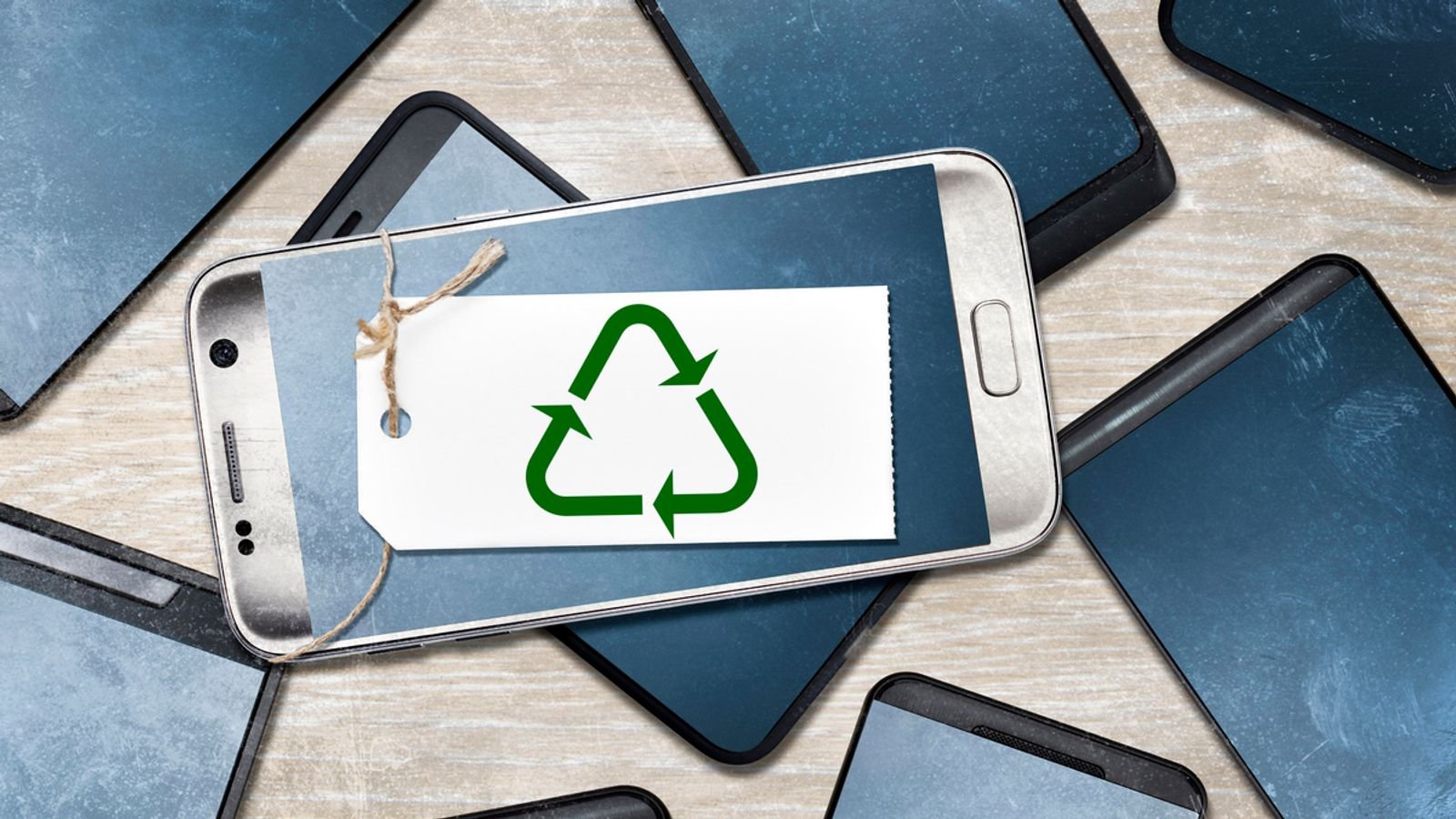Smartphones - Climate Action
I have chosen this project to showcase my proficiency and expertise in stakeholder collaboration for climate action (UN) and virtual workshops.
Climate Action
This project emerged with the goal of creating Climate Action. To achieve this, I developed a research sketch that focused on smartphone consumerism and the consequences of excessive production. After pitching the project to a group of students, supervisors, and professors, four people joined the team.
Our first step was to investigate how the smartphone industry impacts the climate and determine if our research topic was severe enough to warrant a climate action project. We quickly concluded that it was, given the environmental impact of activities such as lithium and cobalt mining and processing. Additionally, we found a significant opportunity for recycling within the industry, which was not being taken advantage of by Western smartphone users.
To move the project forward, we identified and mapped out the various stakeholders who could be involved. I believe that innovation does not happen through individuals generating ideas alone, no matter how good those ideas might be, but that the involvement and engagement of various stakeholders are key to getting things moving.
Stakeholder Collaboration
When we started this research project, we created stakeholder maps to visualize and identify the stakeholders we wanted to collaborate with. After careful consideration, we narrowed down our collaborative stakeholders to GreenMind, a refurbished electronics retail chain, and smartphone users between the ages of 15 and 25.
To initiate our collaboration with GreenMind (which was called Bluecity at the time of our research), we reached out to a store manager in Kolding. We sent him a presentation of our project and explained why we believed it would be of interest to him and his company, given his co-founder status. The manager was enthusiastic about our research and expressed interest in engaging in a mutually beneficial partnership. He was particularly interested in the insights we could provide about his potential customers, while we were keen on learning more about his customers and the refurbished and secondhand smartphone industry in general.
To engage with smartphone users, we used two separate approaches. Firstly, we reached out to our personal networks on Facebook and created groups to gather interested users. Secondly, we visited educational institutions and engaged with users directly at schools. Their motivation for participating in the research was a desire to learn more about the potential of refurbished and second-hand smartphones.
In addition, our research team included two Chinese exchange students who were studying for master's degrees in psychology at Beijing University. Their involvement was particularly interesting, as they brought a different cultural and professional background to the project and offered a unique perspective. However, we encountered ethical complications when we discovered China's involvement in the smartphone manufacturing industry, particularly regarding work environments and their role in mineral extraction in Congo. Despite these challenges, the project provided valuable experience in interdisciplinary collaboration.
Brainstorming board from the initiation of the research project.
Fieldwork
The project was centered around the stakeholders and in order to engage and involve them we carried out various activities in the fieldwork to gather insights from the stakeholders and to make them engaged and included. Including interviews and virtual workshops. However, whilst carrying out this project the COVID-19 pandemic struck Denmark and resulted in a complete lockdown which forced us to adapt and move the fieldwork into a virtual space. Thankfully, we managed to conduct a series of interviews with the stakeholders prior to the lockdown.
Interviews
To begin the fieldwork, we conducted a long series of brief pilot interviews using a phenomenological approach to gain insight into the experiences and opinions of smartphone users on the subject. The insights and data we gathered from these interviews formed the foundation for the subsequent semi-structured interviews. We conducted these interviews with the same group of users and they were more time-consuming, so we sought permission from the educational institutions to set up "interview stations" at the schools to ensure a suitable environment.
In addition to user interviews, I also interviewed the manager at a GreenMind store in Kolding who became a stakeholder in the project. He had worked with refurbished smartphones for many years and had valuable insights into the industry. He was also interested in learning more about the users and customers, making him motivated to participate in the project as a stakeholder.
All semi-structured interviews with the users and GreenMind were audio-recorded, transcribed, and analyzed using the "meningskondensering" approach. This analysis method involves condensing all the statements and insights from the interviews to extract the essence.
Virtual Workshops
This project helped me develop my skills in designing and facilitating virtual workshops. While the virtual setting lacks tangibles and restricts non-verbal communication, we found that certain elements of physical workshops could be adapted and serve a similar purpose.
We created two versions of the workshops. The first version included picture clustering, user narratives, a quiz, and reflections on the video we created.
To conduct virtual workshops effectively, it's important to carefully consider the software you'll use. For our workshops, we utilized Zoom for communication, Kahoot for the quiz, Google Jamboard for collaboration, and Google Drive for data administration.
The purpose of this video was to stimulate and engage participants during certain sessions of the virtual workshops. It was intentionally crafted to reflect the researchers' views and opinions, with the aim of sparking discussions and reflections during the workshop sessions.
Each image was taken by the users prior to the workshop and inserted randomly. The users were then asked to cluster the images into categories of their own choosing in order to sort the smartphones.
(Platform: Google Jamboard)
We conducted workshops exclusively consisting of conversations using a post-it approach. Throughout the workshops, we asked the users different questions, and based on their responses, we discussed their inputs.
(Platform: Google Jamboard)
This image shows a fictive narrative written by a user describing their perfect smartphone. Prior to the workshop, users were asked to write these narratives and forward them to the research team. During a particular session of the workshops, these narratives were discussed and compared among the participants.
(Platform: Google Jamboard)
Workshop analysis
The researcher's observations of the workshops are displayed below each of the blue subcategories. This clustering process was the result of all the observations being randomly placed in an unstructured canvas, and then grouped into related categories.
In order to effectively organize and analyze the data gathered from the workshops, we utilized the collaborative platform Padlet. This platform provided us with simple yet powerful tools that met our specific requirements for the task at hand. In fact, I also leveraged this platform as a tool to analyze a workshop where we presented and tested a prototype with a customer as part of my startup (which is included in my portfolio).
To ensure thorough analysis of the workshops, all sessions were recorded with the participants' consent. By carefully reviewing these recordings, we were able to create hundreds of observations represented by purple, yellow, and white notes. These notes were then clustered into a series of subcategories (represented by blue notes), and subsequently clustered again into four main categories (represented by green notes). Finally, a text was composed for each main category to describe its content. This bottom-up approach proved to be highly effective in analyzing the dataset gleaned from the workshops.
The four main categories (green notes) that contained the most important findings from the workshops were "Brands," "Buyers' Motivation," "The Phone," and "Technology Empowerment," while the blue notes represented subcategories within each main category.
Contribution
As part of the research project, we investigated the national smartphone landscape and the habits of young people between the ages of 15 and 25. Through our research, we gained valuable insights into the patterns of smartphone usage among young people. We also had the opportunity to interview the co-founder and leader of a department of an international retail corporation that sells newly refurbished smartphones (GreenMind).
Our research revealed that most young people keep their smartphones for one to two years and that the majority prefer the latest smartphones with good cameras and sound. However, we found that young people are not presented with alternative options such as buying used or refurbished smartphones or repairing their existing devices. We also discovered that young people are aware of the environmental impact of their smartphone usage but do not see it as a significant factor when purchasing a new device.
Based on our findings, we concluded that more needs to be done to promote shops that repair and refurbish older phones and resell them to customers. This could help to reduce the demand for new devices and decrease the resource-intensive production process of smartphones. We also suggest promoting sustainable smartphone brands that operate with chain responsibility, such as FairPhone, as an alternative to traditional smartphone brands.
Our research provides valuable insights into the habits and preferences of young people when it comes to smartphones and highlights the need for more sustainable options in the smartphone industry.
Once the analysis of the collected data was finalized, we proceeded to create a pamphlet that included all the relevant findings from our studies. This pamphlet was then handed over to GreenMind for further distribution and knowledge sharing.
Moreover, I firmly believe that through our interviews with the youth and our workshops, we were able to raise awareness among them about the production of smartphones and the impact that consumers' choices have on the environment.









